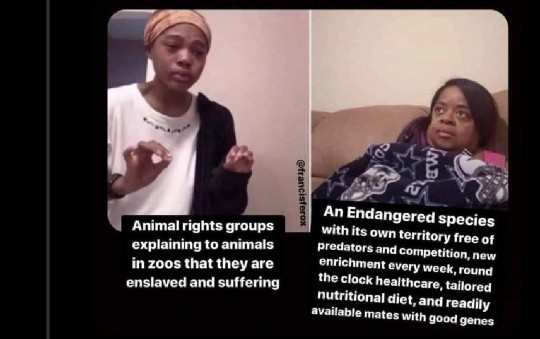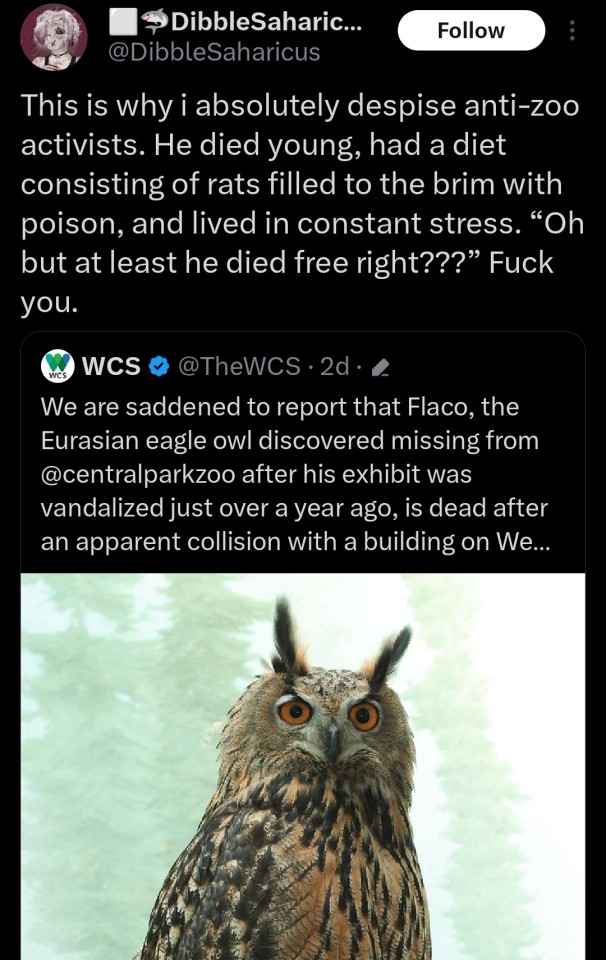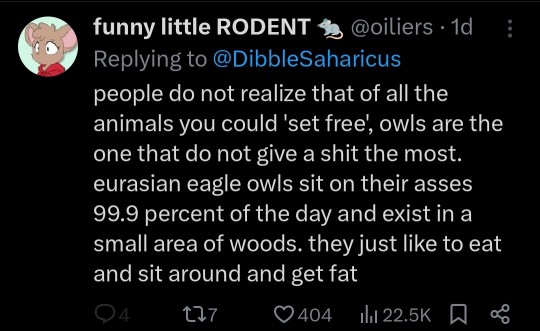#endanger species
Explore tagged Tumblr posts
Text

Rare Bird by Maria Mudd Ruth
Cover art by Paul Harris Jones
Mountaineers Book, 2013
Part naturalist detective story, part environmental inquiry, this vibrant narrative celebrates the fascinating world of an endangered seabird that depends on the contested old-growth forests of the Pacific Northwest for its survival.
"This chunky little seabird stole my heart." So confesses Maria Mudd Ruth, a veteran nature writer perfectly happy to be a generalist before getting swept up in the strange story of the marbled murrelet. This curiosity of nature, who flies like a little brown bullet at up to 100 miles an hour and lives most of its life offshore, is seen around land only during breeding season, when the female lays a single egg high on a mossy tree limb in the ancient coastal forest.
Ruth traces reports of the bird back to Captain Cook's ill-fated voyage of discovery on the Pacific Ocean in 1778, and explores the mind-set of 19th- and 20th-century naturalists who--despite their best efforts--failed to piece together clues about the whereabouts of the bird's nest. She takes the reader along on adventurous outings to coastal meadows before dawn, and onto the ocean at midnight to learn firsthand how scientists observe nature. She interviews all the major players in the drama: timber company executives and fishing fleet operators whose businesses are threatened by conservation measures, as well as the so-called cowboy scientists who are devoted to saving the marbled murrelet from extinction. And, ultimately, Ruth conveys her curiosity and passion for this rare bird onto the page for readers to savor.
#book cover art#cover illustration#cover art#Rare Bird#Maria Mudd Ruth#Paul Harris Jones#nature writing#creative nonfiction#birds#birding#marbled murrelet#naturalist#conservation#conservation biology#natural history#bird watching#endanger species#nonfiction
5 notes
·
View notes
Text



NEW BONGO CALF AT DENVER ZOO!!!!!!
21K notes
·
View notes
Text
"A tribal-led nonprofit is creating a network of native bison ranchers that are restoring ecosystems on the Great Plains, restoring native ranchers’ connections with their ancestral land, and restoring the native diet that their ancestors relied on.
Called the Tanka Fund, they coordinate donors and partners to help ranchers secure grazing land access, funds needed to install and repair fencing, increase their herd sizes, and access markets for bison meat across the country.
That’s the human part of the story. But as Dawn Sherman, executive director of the Tanka Fund, told Native Sun News, they’re “buffalo people” and these four-legged, 2,000 lbs. “cousins” are equal-part-protagonists.
The return of the bison means the return of the prairie, one of the three great grassland ecosystems on the planet, of which just 1% remains as it was when the Mayflower arrived.
“Bringing buffalo back to their ancestral homelands is essential to restoring the ecosystem. We know that the buffalo is a keystone species,” said Dawn Sherman, a member of the Lakota, Delaware, Shawnee, and Cree.
“Bringing the buffalo back to the land and to our people, helps restore the ecosystem and everything it supports from the animals to the plants to the people. It’s come full circle. That’s how we see it.”
As Sherman and the Tanka Fund help native ranchers grow their operations, everyone is well aware of the power of the bison to transform the environment: just as nations across Europe are, who are reintroducing wood bison to various ecosystems, for all the same reasons.
Sherman points out the variety of ways in which buffalo anchor the prairie ecosystem. The almost-extinct black-footed ferret, she points out, lived symbiotically with the bison, and with the latter gone, the former followed—nearly.
The long-billed curlew uses bison dung as a disguise to hide nests from predators. Deer, pronghorn antelope, and elk all rely on bison to plow through deep snows and uncover the grasses that these smaller animals can’t reach.
Everywhere the bison hurls its massive body, life springs in the beast’s wake. When bison roll about on the plains, it creates depressions known as wallows. These fill with rainwater and create enormous puddles where amphibians and insects thrive and reproduce. Certain plants evolved to grow in the wet conditions of the wallows which Native Americans harvested for food and medicine.
Native plants evolved under the trampling hooves of millions of bison, and that constant tamping down of the Earth is a key necessity in the spreading of native wildflower seed.
Indeed, Sherman says some of these native ranchers are bringing bison onto lands still visibly affected by the Dust Bowl, and already the animals are acting like a giant wooly cure-all for the land’s ills.
Since 2020, the Tanka Fund, in partnership with the Inter-Tribal Buffalo Council and the Nature Conservancy, has overseen the transfer of 2,300 bison from Nature Conservancy reserves to lands managed by ranchers within the Tanka Fund network.
“[T]he more animals that we can get the more of that prairie we can restore,” said Sherman. “We can help restore the land that has been plowed and has been leased out to cattle ranchers.”"
youtube
-Article via Good News Network, February 13, 2025. Video via Tanka Fund, July 17, 2024.
#indigenous#indigenous peoples#first nations#native americans#bison#ecology#ecosystem#ecosystem restoration#keystone species#endangered species#environment#prairie#great plains#land back#good news#hope#Youtube
11K notes
·
View notes
Text
You’ve seen those photos of dogs snapped through catching a treat, with just the silliest faces? I see those and raise you: a tiger catching meatballs.


This is Kali, a Sumatran tigress at the Point Defiance Zoo & Aquarium in Tacoma.
#animal photography#zoo photography#my photography#funny animals#tiger#big cat#Sumatran tiger#endangered species#meat
17K notes
·
View notes
Text
I need you all to appreciate how crazy it is to have watched the scimitar horned oryx go from a poster child for "it only exists in zoos" to merely endangered (not even critically endangered!) over my lifetime.
So many heroic people contributed ridiculous amounts of time and effort to make this captive breeding and reintroduction effort a success.
#conservation#biodiversity#good news#hope#reintroduction#endangered species#animal conservation#zoos prevent extinction#captive breeding#environment#positive news#positivity
3K notes
·
View notes
Text





So--long story short, a FedEx driver killed a rattlesnake that happened to be on someone's porch, not causing any immediate problems. This is an all too common practice here in the United States, where a significant portion of the population has the backwards idea that "the only good snake is a dead snake" and that the only way to deal with a venomous snake in the proximity of a house, or people in general, is to kill it. Never mind that snakes tend to move on if left alone, and that there are numerous entities that can be contacted to move the snake safely to another place if so desired, and that most bites occur when someone is harassing, handling, or trying to kill the snake.
Dr. Emily Taylor of California Polytechnic State University (@snakeymama on Twitter) has requested that people contact FedEx about their recent commercial glorifying the killing of the snake, which you can view here. I've included both her and my letters to the appropriate folks at FedEx. There are options for both email and snail mail correspondence, and the more people FedEx hears from about this appalling matter, the better.
It's 2024, almost 2025. We have tons of information on rattlesnake behavior and best practices in coexisting with them (to include training your dogs in snake avoidance). We know plenty about the importance they have in local ecosystems, and the devastation that has been done through people slaughtering them, sometimes in the thousands (I wrote about the ongoing problem of rattlesnake roundups and their inherent cruelty here.) There are multiple rattlesnake species that are endangered or otherwise threatened with extinction.
The vast majority of encounters with venomous snakes are benign, and the vast majority of bites come from someone (person, dog, etc.) confronting the snake that was just trying to defend itself. We've spent a lot of time in this country defaulting to killing anything that inconveniences us, but there are better ways to live safely in proximity to wildlife that don't involve violence. It just takes a little more effort and awareness, and most importantly a significant attitude change that no longer vilifies native wildlife simply trying to live their lives.
As Dr. Taylor mentioned, if you want to contact FedEx, here are your options:
"You can help by reposting this or by emailing to express your concern about the commercial: [email protected] and to the CEO at [email protected]. Or send letters to: Fred Smith, CEO Brie Carere, Executive Vice President and Chief Customer Officer Ryan Kelly, Vice President of Marketing FedEx Corporation 942 South Shady Grove Road Memphis, TN 38120 USA"
#animal death#cw animal death#animal cruelty#animal welfare#snakes#rattlesnakes#reptiles#herps#nature#wildlife#animals#ecology#endangered species#conservation#animal behavior#PSA#call to action#please reblog#important
3K notes
·
View notes
Text
getting emotional over footage of an amateur scuba diver interacting with a coelacanth. they are hunted by large deepwater predators, and here comes a large creature bearing the brightest lights it's ever seen, making strange noises, but it does not shy away. it hovers, calmly, as the diver reaches out and trails a hand down its back. im strongly against the anthropomorphizing of real life animals but the stupid emotional part of me loudly insists this is because it recognizes us, the alternating movements of its four paired limbs matching the diver's four paired limbs, & it is thinking, "hello, cousins, we missed you these 66 million years, it's so good to see you again. welcome back, welcome home."
#[OBLIGATORY DISCLAIMER: he should NOT have touched the fish. do NOT touch random fish you find while scuba diving#especially if the fish is 6ft long & has sharp teeth#ESPECIALLY if the fish is a critically endangered species#being overwhelmed by the majesty of the coelcanth is understandable but that does not excuse his behavior]#[obligatory disclaimer 2: i know nothing about this guy; by 'amateur' i just mean he wasnt part of a scientific expedition at the time]#[obligatory disclaimer 3: i mean it wasnt CALM. its first dorsal fin was erect which we have reason to believe means it is on edge.#but it didnt flee like you would expect of a wild animal]#...disclaimers over. now im going to wail about how life began in the sea and we left & they stayed#& we thought they were gone & now we're finding our way back home to them#they are so beautiful and they are our family and they love us ok. they do i know it in my heart#coelacanth#Latimeria chalumnae#animals#andy original#ALSO I KNOW THEY HAVE 8 FINS by four paired limbs i mean the pelvic and pectoral the others arent paired they dont move like legs do
9K notes
·
View notes
Text
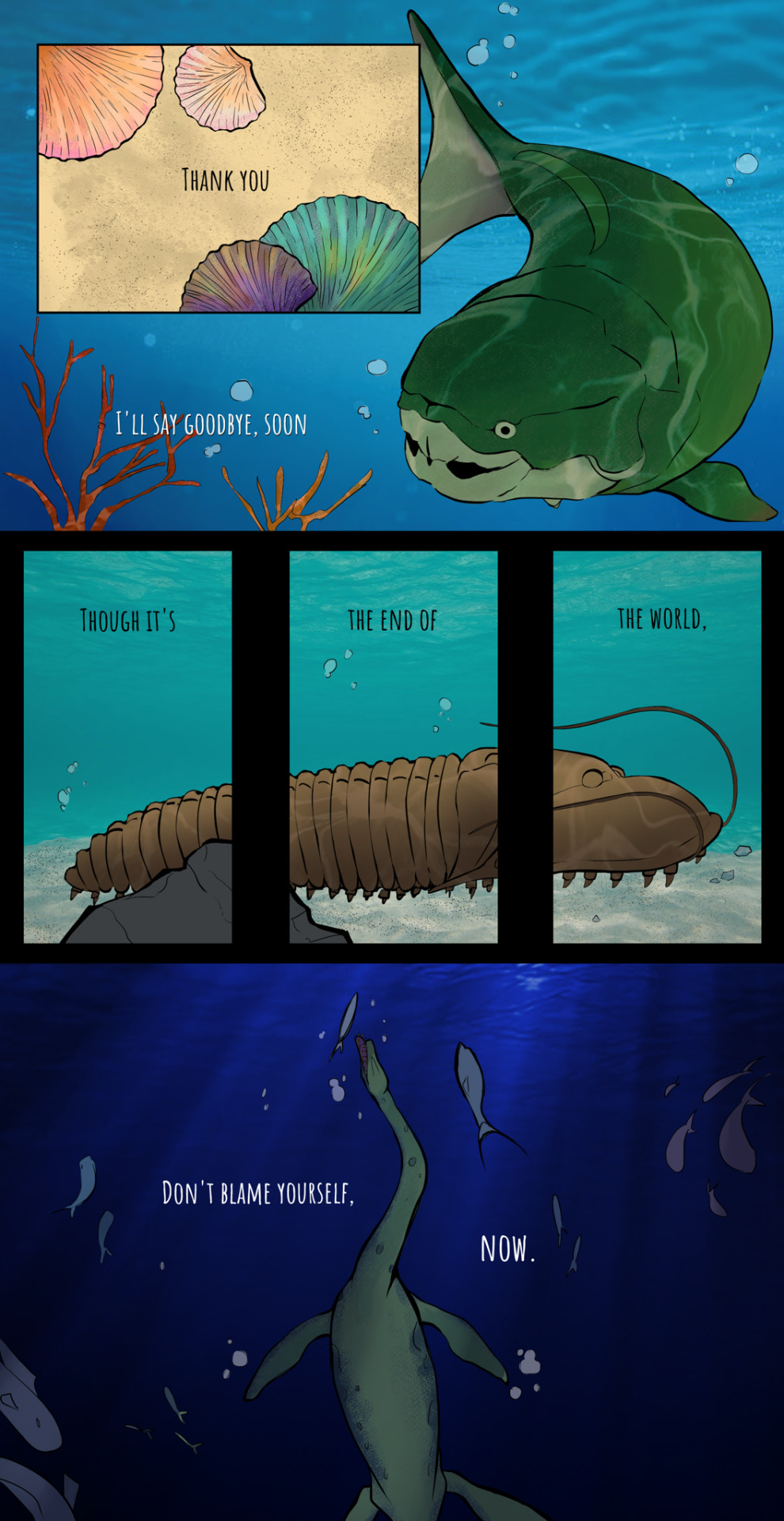
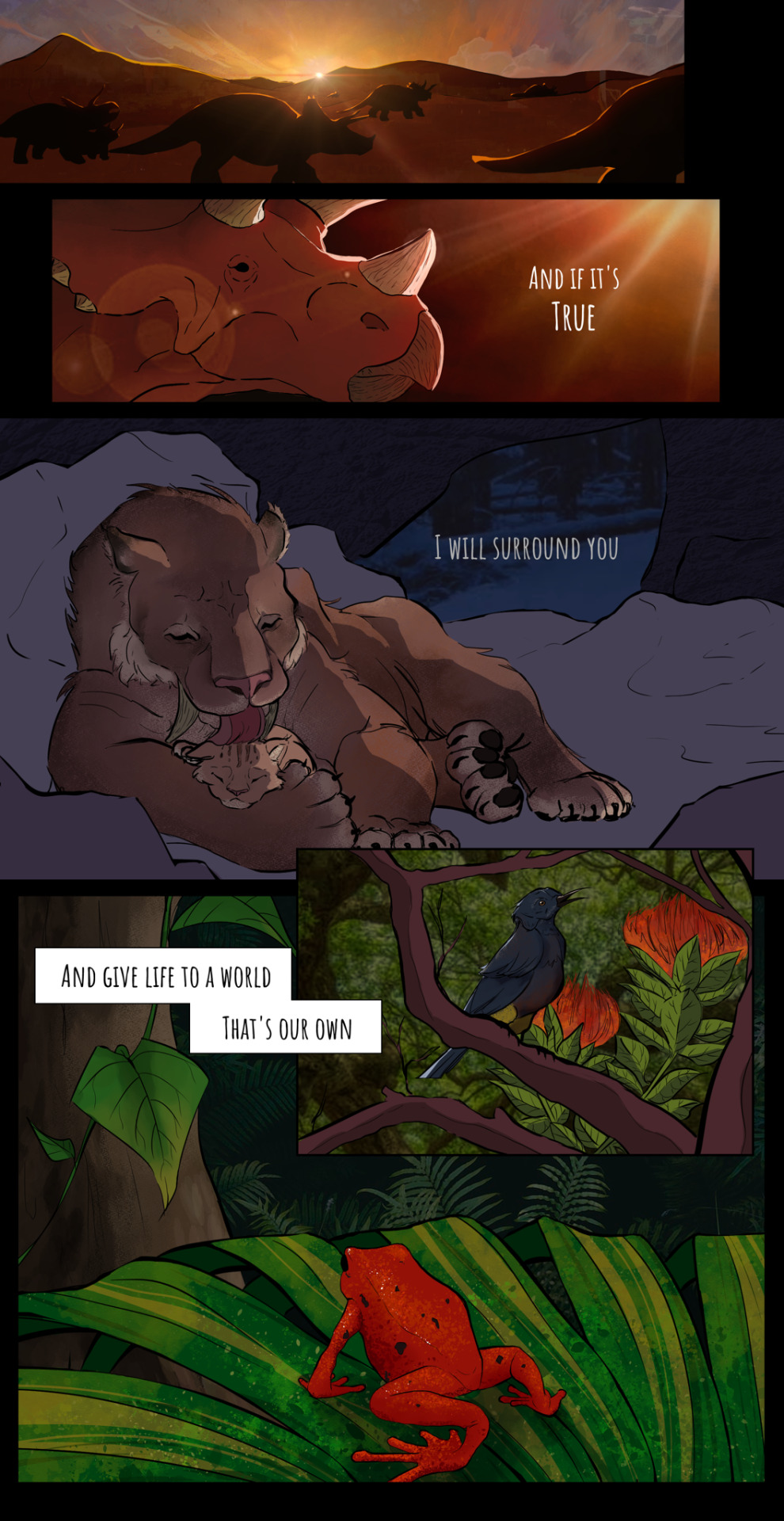
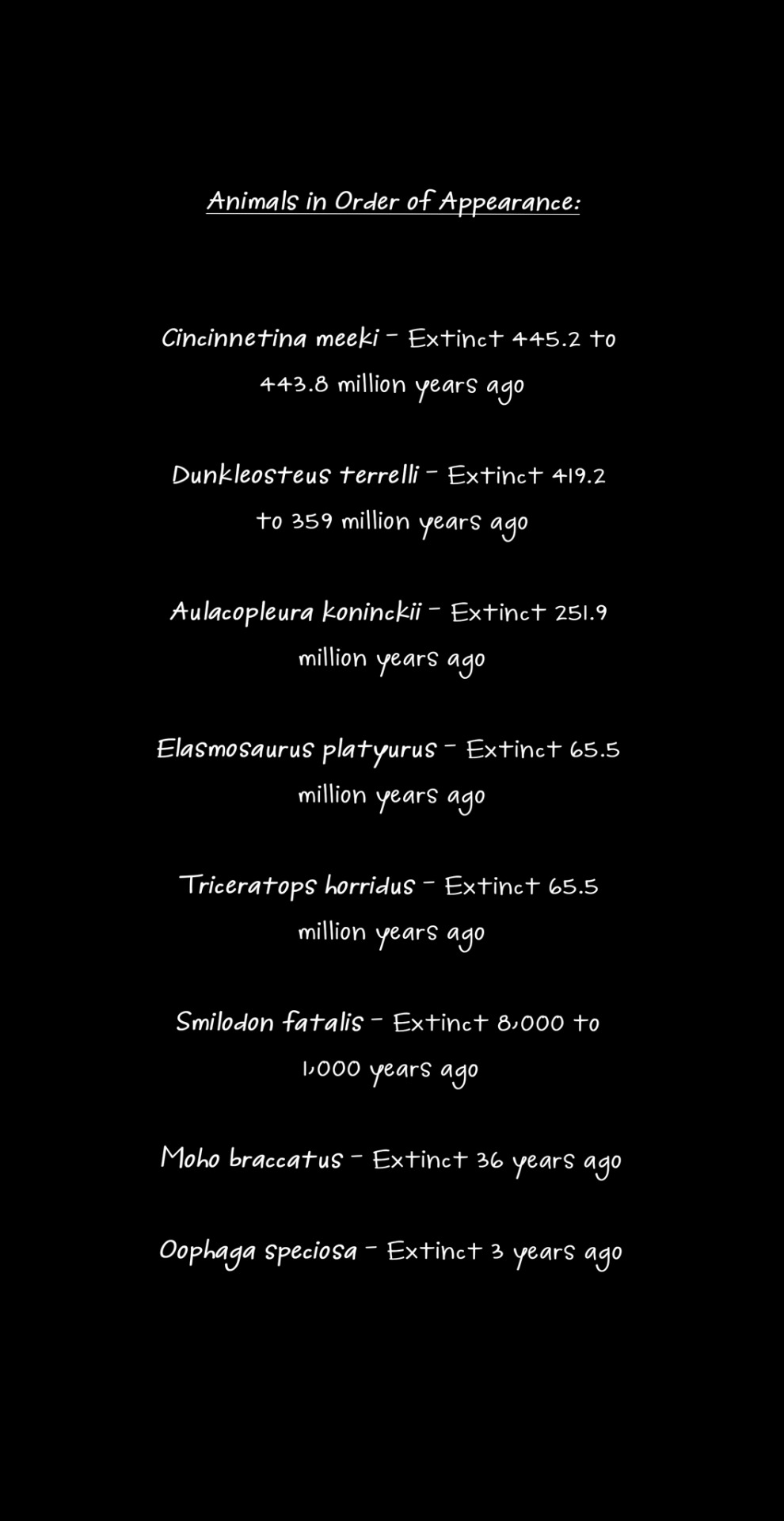
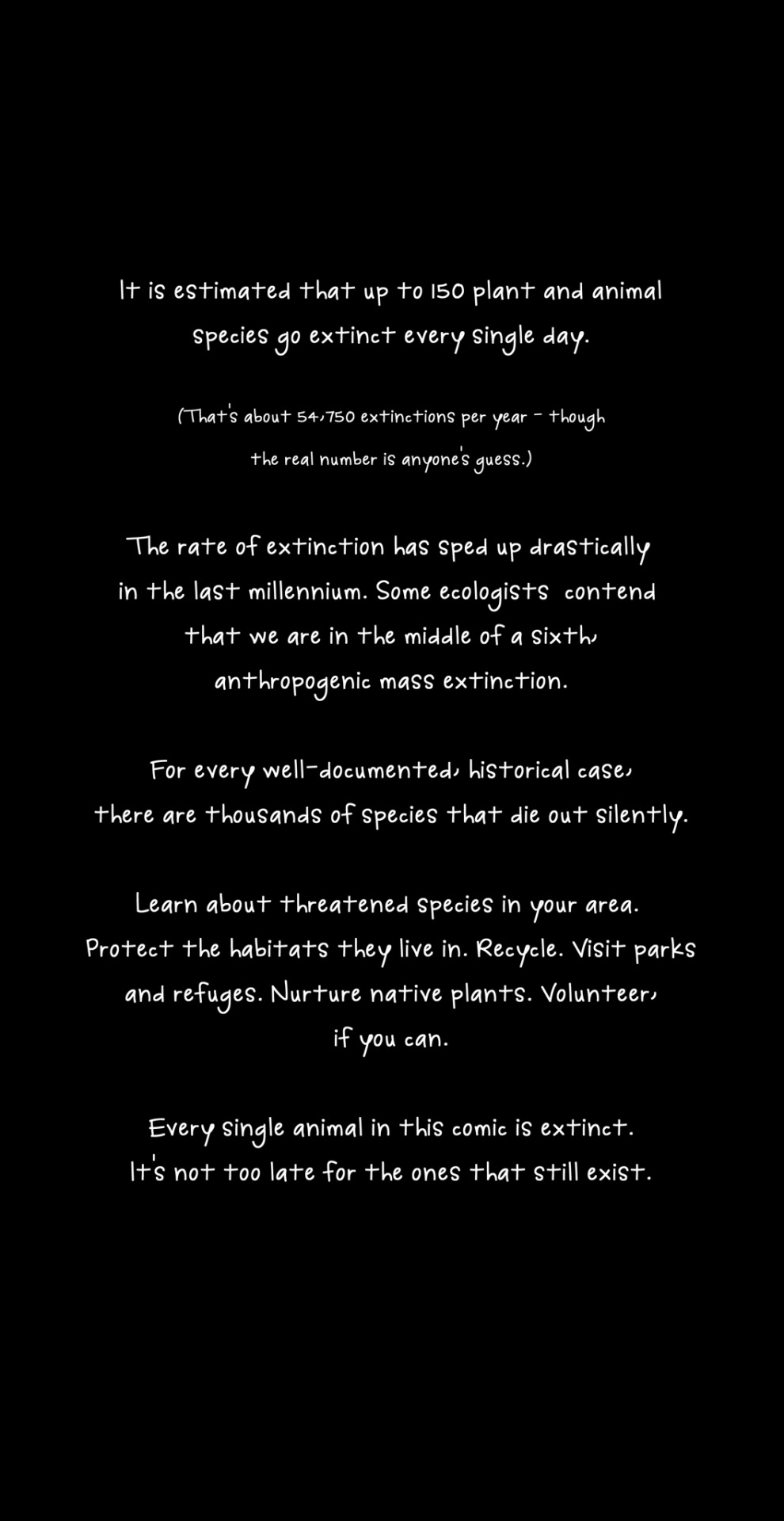
text from porter robinson's "goodbye to a world"
every single animal in this comic is extinct. it's not too late for the ones that are left.
edit: thanks @mudcrabmassacre for the correction, smilodon fatalis did not in fact go extinct in 1023 AD. the actual prediction is around 10,000 years ago - I think i may have missed a zero or two.
#comic#art#environment#conservation#animals#extinct species#fossils#climate change#dinosaurs#ancient life#endangered species#endangered animals#comics#artists on tumblr#digital art#digital comic#my-art#x
11K notes
·
View notes
Text

On April 19th, 1987, a bird known as Adult Condor 9 was captured in the Bitter Creek National Wildlife Refuge, near Bakersfield, California. After decades ravaged by the threats of lead-poisoning and pesticide exposure, and intense debate over the ethics of captivity, it had been determined that captive breeding was the final hope to save a species. As his designation might suggest, AC-9 was the ninth condor to be captured for the new program; he was also the last.
As the biology team transported the seven-year-old male to the safety of the San Diego Wild Animal Park, his species, the California Condor, North America's largest bird, became extinct in its native range. It was Easter Sunday—a fitting day for the start of a resurrection.
At the time of AC-9's capture, the total world population of California condors constituted just twenty-seven birds. The majority of them represented ongoing conservation attempts: immature birds, taken from the wild as nestlings and eggs to be captive-reared in safety, with the intention of re-release into the wild. Now, efforts turned fully towards the hope of captive breeding.
Captive breeding is never a sure-fire bet, especially for sensitive, slow-reproducing species like the condor. Animals can and do go extinct even when all individuals are successfully shielded from peril and provided with ideal breeding conditions. Persistence in captivity is not the solution to habitat destruction and extirpation—but it can buy valuable time for a species that needs it.
Thankfully, for the California condor, it paid off.
The birds defied expectations, with an egg successfully hatched at the San Diego Zoo the very next year. Unlike many other birds of prey, which may produce clutches of up to 5 hatchlings, the California condor raises a single chick per breeding season, providing care for the first full year of its life, and, as a consequence, often not nesting at all in the year following the birth of a chick. This, combined with the bird's slow maturation (taking six to eight years to start breeding), presented a significant challenge. However, biologists were able to exploit another quirk of the bird's breeding cycle: its ability to double-clutch.
Raising a single offspring per year is a massive risk in a world full of threats, and the California condor's biology has provided it with a back-up plan: in years when a chick or egg has been lost, condors will often re-nest with a second egg. To take advantage of this tendency, eggs were selectively removed from birds in the captive breeding program, which would then lay a replacement, greatly increasing their reproduction rate.
And what of the eggs that were taken? The tendency of hatchlings to imprint is well-known, and the intention from the very beginning was for the birds to one day return to the wild—an impossibility for animals acclimated to humans. And so, puppets were made in the realistic likeness of adult condors, and used by members of the conservation team to feed and nurture the young birds, mitigating the risk of imprintation on the wrong species.
By 1992, the captive population had more than doubled, to 64 birds. That year, after an absence of five years, the first two captive-bred condors were released into their ancestral home. Many other releases followed, including the return of AC-9 himself in 2002. Thanks to the efforts of zoos and conservationists, as of 2024 there are 561 living California condors, over half of which fly free in the wilds of the American West.
The fight to save the California condor is far from over. The species is still listed as critically endangered. Lead poisoning (from ingesting shot/bullets from abandoned carcasses) remains the primary source of mortality for the species, with tagged birds tested and treated whenever possible. Baby condors are fed bone chips by their parents, likely as a calcium supplement—but, to a condor, bits of bone and bits of plastic can be indistinguishable, and dead nestlings have been found with stomachs full of trash.
There's hope, though. There are things we can change, things we can counteract and stop from happening in the future. It was a human hand that created this problem, and it will take a human hand to fix it. Hope is only gone when the last animal breathes its last breath—and the California condor is still here.
-
This painting is titled Puppet Rearing (California Condor), and is part of my series Conservation Pieces, which focuses on the efforts and techniques used to save critically endangered birds from extinction. It is traditional gouache, on 22x30" paper.

#california condor#bird art#bird extinction#endangered species#conservation#series: conservation pieces#extinction stories
1K notes
·
View notes
Text




The adorable (but sadly critically endangered) wild European hamster
🥜 julianradwildlife on IG
#hamsters#animals#wildlife#ecology#endangered species#flowers#fruit#berries#nature#stim#owl post#stimming#nature stim#animal stim#food#gifs#cute#om nom nom#blackberries
1K notes
·
View notes
Text


#good news#arapaima#fish#endangered species#environmentalism#science#nature#animals#conservation#amazon rainforest#amazon river#environment#community organizing#community conservation
1K notes
·
View notes
Text
"Once thought to be extinct, black-footed ferrets are the only ferret native to North America, and are making a comeback, thanks to the tireless efforts of conservationists.
Captive breeding, habitat restoration, and wildlife reintegration have all played a major role in bringing populations into the hundreds after near total extinction.
But one other key development has been genetic cloning.
In April [2024], the United States Fish and Wildlife Service announced the cloning of two black-footed ferrets from preserved tissue samples, the second and third ferret clones in history, following the birth of the first clone in December 2020.
Cloning is a tactic to preserve the health of species, as all living black-footed ferrets come from just seven wild-caught descendants. This means their genetic diversity is extremely limited and opens them up to greater risks of disease and genetic abnormalities.
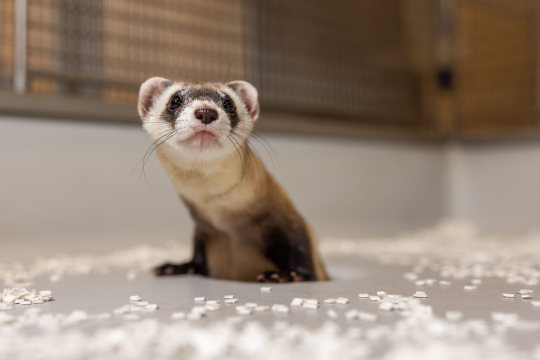
Now, a new breakthrough has been made.
Antonia, a black-footed ferret cloned from the DNA of a ferret that lived in the 1980s has successfully birthed two healthy kits of her own: Sibert and Red Cloud.
These babies mark the first successful live births from a cloned endangered species — and is a milestone for the country’s ferret recovery program.
The kits are now three months old, and mother Antonia is helping to raise them — and expand their gene pool.
In fact, Antonia’s offspring have three times the genetic diversity of any other living ferrets that have come from the original seven ancestors.

Researchers believe that expanded genetic diversity could help grow the ferrets’ population and help prime them to recover from ongoing diseases that have been massively detrimental to the species, including sylvatic plague and canine distemper.
“The successful breeding and subsequent birth of Antonia's kits marks a major milestone in endangered species conservation,” said Paul Marinari, senior curator at the Smithsonian’s National Zoo and Conservation Biology Institute.
“The many partners in the Black-footed Ferret Recovery Program continue their innovative and inspirational efforts to save this species and be a model for other conservation programs across the globe.”
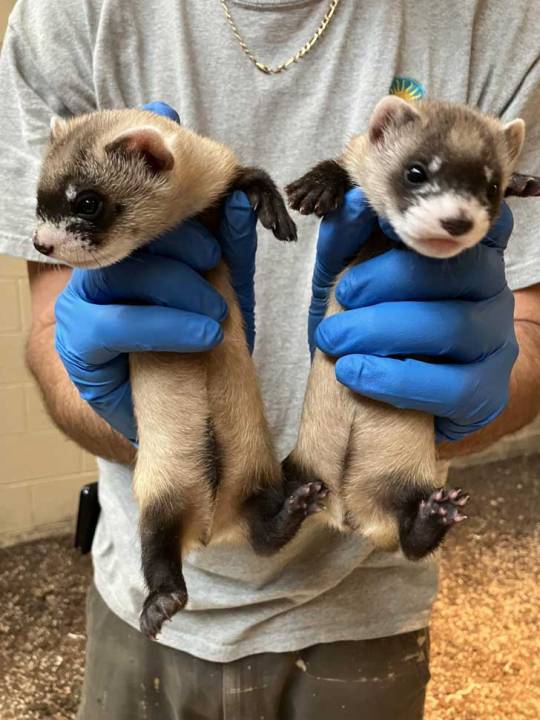
Antonia actually gave birth to three kits, after mating with Urchin, a 3-year-old male ferret. One of the three kits passed away shortly after birth, but one male and one female are in good health and meeting developmental milestones, according to the Smithsonian.
Mom and babies will remain at the facility for further research, with no plans to release them into the wild.
According to the Colorado Sun, another cloned ferret, Noreen, is also a potential mom in the cloning-breeding program. The original cloned ferret, Elizabeth Ann, is doing well at the recovery program in Colorado, but does not have the capabilities to breed.
Antonia, who was cloned using the DNA of a black-footed ferret named Willa, has now solidified Willa’s place as the eighth founding ancestor of all current living ferrets.
“By doing this, we’ve actually added an eighth founder,” said Tina Jackson, black-footed ferret recovery coordinator for the U.S. Fish and Wildlife Service, in an interview with the Colorado Sun.
“And in some ways that may not sound like a lot, but in this genetic world, that is huge.”

Along with the USFWS and Smithsonian, conservation organization Revive & Restore has also enabled the use of biotechnologies in conservation practice. Co-founder and executive director Ryan Phelan is thrilled to welcome these two new kits to the black-footed ferret family.
“For the first time, we can definitively say that cloning contributed meaningful genetic variation back into a breeding population,” he said in a statement.
“As these kits move forward in the breeding program, the impact of this work will multiply, building a more robust and resilient population over time.”"
-via GoodGoodGood, November 4, 2024
#ferret#ferrets#mustelid#black footed ferret#conservation#endangered species#conservation biology#biodiversity crisis#dna#genetics#cloning#good news#hope#hope posting#hopecore#hopepunk
10K notes
·
View notes
Text
Good News - June 15-21
Like these weekly compilations? Tip me at $Kaybarr1735! And if you tip me and give me a way to contact you, at the end of the month I'll send you a link to all of the articles I found but didn't use each week!
1. Victory for Same-Sex Marriage in Thailand

“Thailand’s Senate voted 130-4 today to pass a same-sex marriage bill that the lower house had approved by an overwhelming majority in March. This makes Thailand the first country in Southeast Asia, and the second in Asia, to recognize same-sex relationships. […] The Thai Marriage Equality Act […] will come into force 120 days after publication in the Royal Gazette. It will stand as an example of LGBT rights progress across the Asia-Pacific region and the world.”
2. One of world’s rarest cats no longer endangered
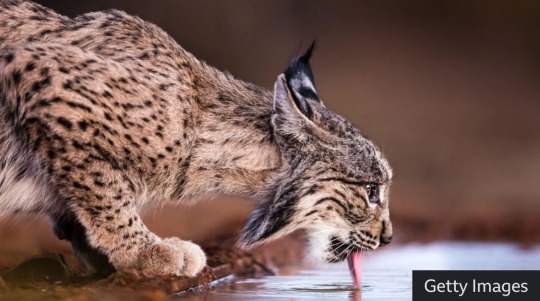
“[The Iberian lynx’s] population grew from 62 mature individuals in 2001 to 648 in 2022. While young and mature lynx combined now have an estimated population of more than 2,000, the IUCN reports. The increase is largely thanks to conservation efforts that have focused on increasing the abundance of its main food source - the also endangered wild rabbit, known as European rabbit. Programmes to free hundreds of captive lynxes and restoring scrublands and forests have also played an important role in ensuring the lynx is no longer endangered.”
3. Planning parenthood for incarcerated men
“[M]any incarcerated young men missed [sex-ed] classroom lessons due to truancy or incarceration. Their lack of knowledge about sexual health puts them at a lifelong disadvantage. De La Cruz [a health educator] will guide [incarcerated youths] in lessons about anatomy and pregnancy, birth control and sexually transmitted infections. He also explores healthy relationships and the pitfalls of toxic masculinity. […] Workshops cover healthy relationships, gender and sexuality, and sex trafficking.”
4. Peru puts endemic fog oasis under protection
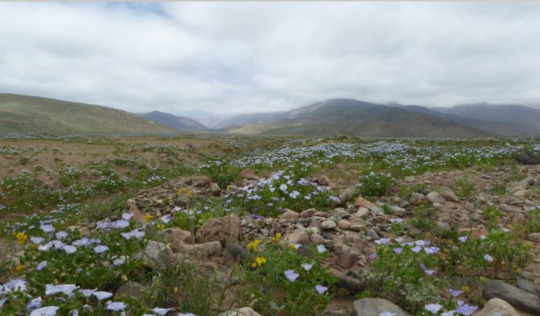
“Lomas are unique ecosystems relying on marine fog that host rare and endemic plants and animal species. […] The Peruvian government has formally granted conservation status to the 6,449-hectare (16,000-acre) desert oasis site[….] The site, the first of its kind to become protected after more than 15 years of scientific and advocacy efforts, will help scientists understand climatic and marine cycles in the area[, … and] will be protected for future research and exploration for at least three decades.”
5. Religious groups are protecting Pride events — upending the LGBTQ+ vs. faith narrative

“In some cases, de-escalation teams stand as a physical barrier between protesters and event attendees. In other instances, they try to talk with protesters. The goal is generally to keep everyone safe. Leigh was learning that sometimes this didn’t mean acting as security, but doing actual outreach. That might mean making time and space to listen to hate speech. It might mean offering food or water. […] After undergoing Zoom trainings this spring, the members of some 120 faith organizations will fan out across more than 50 Pride events in 16 states to de-escalate the actions of extremist anti-LGBTQ+ hate groups.”
6. 25 years of research shows how to restore damaged rainforest
“For the first time, results from 25 years of work to rehabilitate fire-damaged and heavily logged rainforest are now being presented. The study fills a knowledge gap about the long-term effects of restoration and may become an important guide for future efforts to restore damaged ecosystems.”
7. Audubon and Grassroots Carbon Announce First-of-its-Kind Partnership to Reward Landowners for Improving Habitats for Birds while Building Healthy Soils
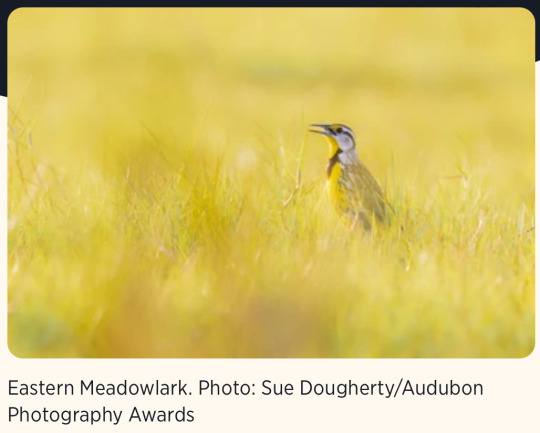
“Participating landowners can profit from additional soil carbon storage created through their regenerative land management practices. These practices restore grasslands, improve bird habits, build soil health and drive nature-based soil organic carbon drawdown through the healthy soils of farms and ranches. […] Additionally, regenerative land management practices improve habitats for birds. […] This partnership exemplifies how sustainable practices can drive positive environmental change while providing tangible economic benefits for landowners.”
8. Circular food systems found to dramatically reduce greenhouse gas emissions, require much less agricultural land
“Redesigning the European food system will reduce agricultural land by 44% while dramatically reducing greenhouse gas emissions from agriculture by 70%. This reduction is possible with the current consumption of animal protein. “Moreover, animals are recyclers in the system. They can recycle nutrients from human-inedible parts of the organic waste and by-products in the food system and convert them to valuable animal products," Simon says.”
9. Could Treating Injured Raptors Help Lift a Population? Researchers found the work of rehabbers can have long-lasting benefits

“[“Wildlife professionals”] tend to have a dismissive attitude toward addressing individual animal welfare,” [… but f]or most raptor species, they found, birds released after rehabilitation were about as likely to survive as wild birds. Those released birds can have even broader impacts on the population. Back in the wild, the birds mate and breed, raising hatchlings that grow up to mate and breed, too. When the researchers modeled the effects, they found most species would see at least some population-level benefits from returning raptors to the wild.”
10. Indigenous people in the Amazon are helping to build bridges & save primates
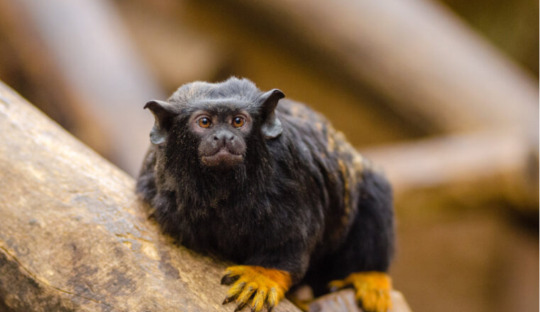
“Working together, the Reconecta Project and the Waimiri-Atroari Indigenous people build bridges that connect the forest canopy over the BR-174 road[….] In the first 10 months of monitoring, eight different species were documented — not only monkeys such as the golden-handed tamarin and the common squirrel monkey (Saimiri sciureus), but also kinkajous (Potos flavus), mouse opossums (Marmosops sp.), and opossums (Didelphis sp.).”
Bonus: A rare maneless zebra was born in the UK
June 8-14 news here | (all credit for images and written material can be found at the source linked; I don’t claim credit for anything but curating.)
#hopepunk#good news#lgbtq#gay rights#gay marriage#same sex marriage#thailand#lynx#big cats#cats#endangered species#endangered#sex education#prison#peru#conservation#habitat#religion#pride#faith#pride month#lgbt pride#compassion#rainforest#birds#nature#climate change#wildlife rehab#wildlife#indigenous
1K notes
·
View notes
Text




The Dracula Parrot, New Guinea
rawrszn
#Pesquet's parrot#Psittrichas fulgidus#birds#rainforest#wildlife#endangered species#don't poach#don't buy wild animals!#curators on tumblr
632 notes
·
View notes
Text
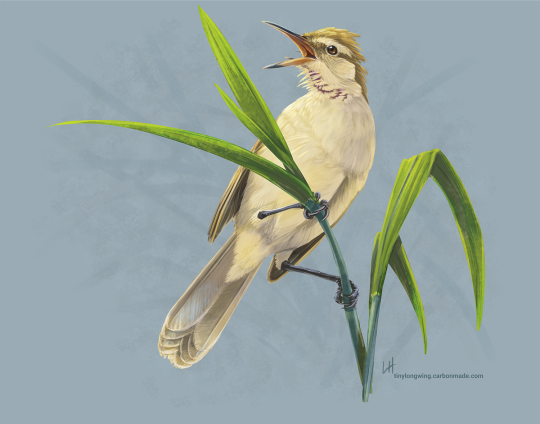
Ga'ga karisu, Saipan Reed-Warbler (Acrocephalus hiwae) is a critically endangered species found in the Northern Mariana Islands. Though few remain due to habitat loss, they fill the air with their rich melodic songs in those places where they can still hold on.
Their closest relative, the Nightingale Reed-Warbler of Guam, is extinct due to habitat loss and the invasive brown tree snake.
#endangered species#endangered birds#scientific illustration#birblr#saipan reed-warbler#reed-warbler#nightingale reed-warbler#northern mariana islands#pacific islands#artists on tumblr
3K notes
·
View notes
